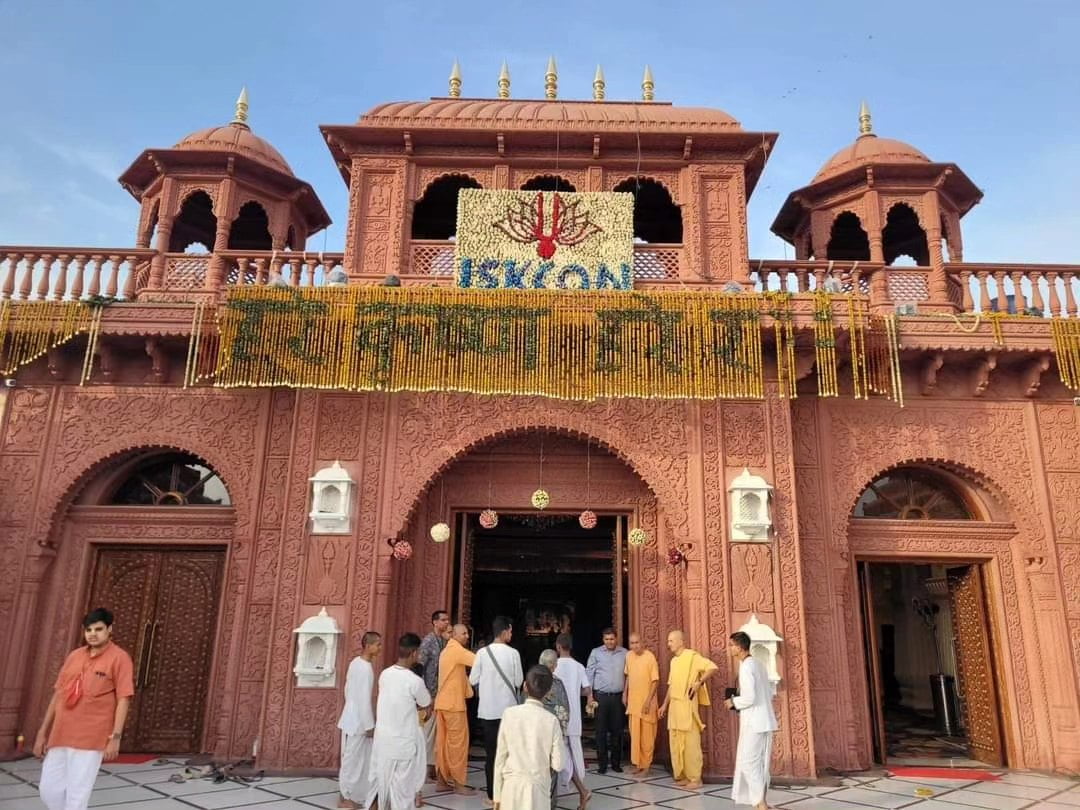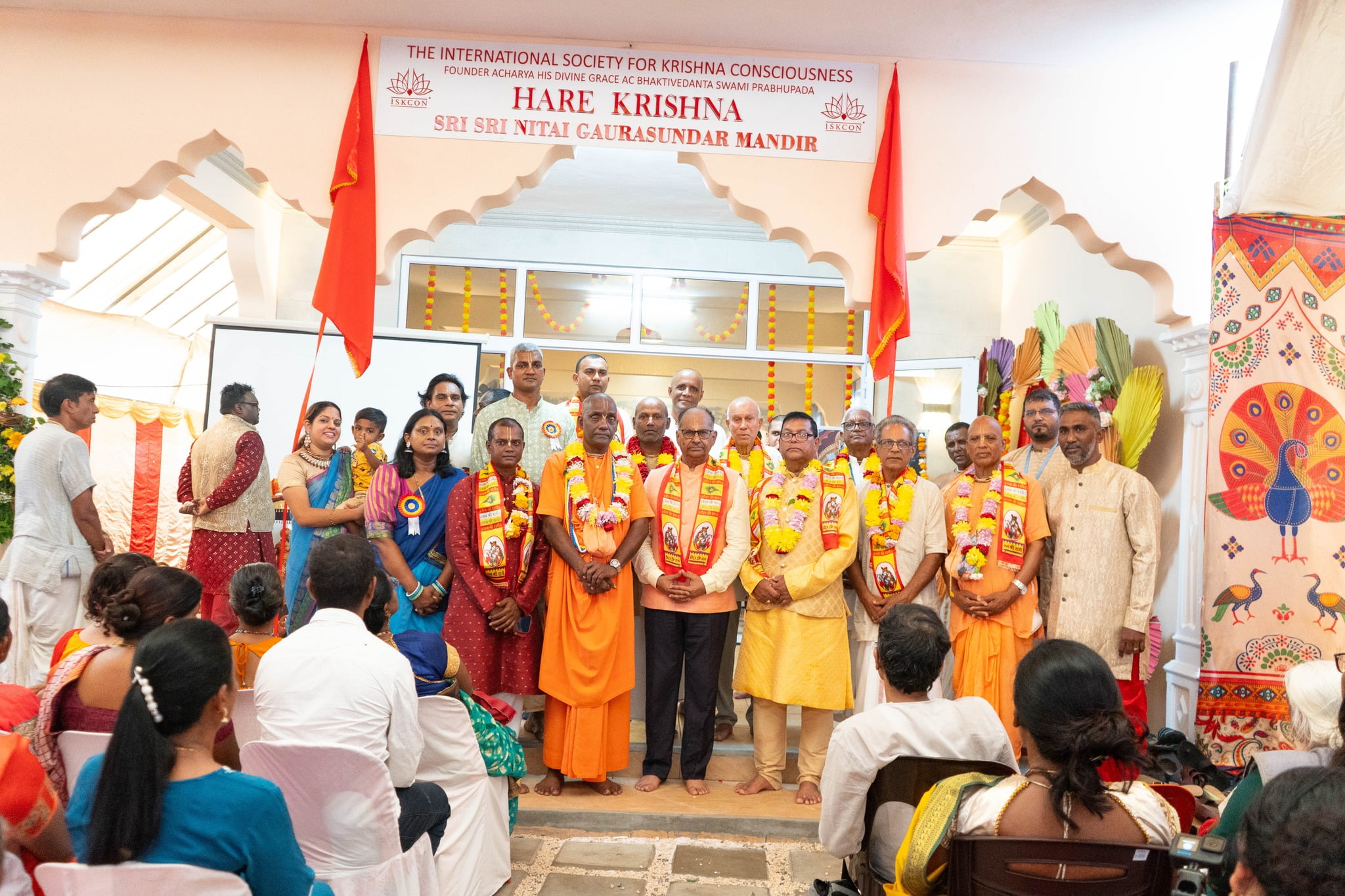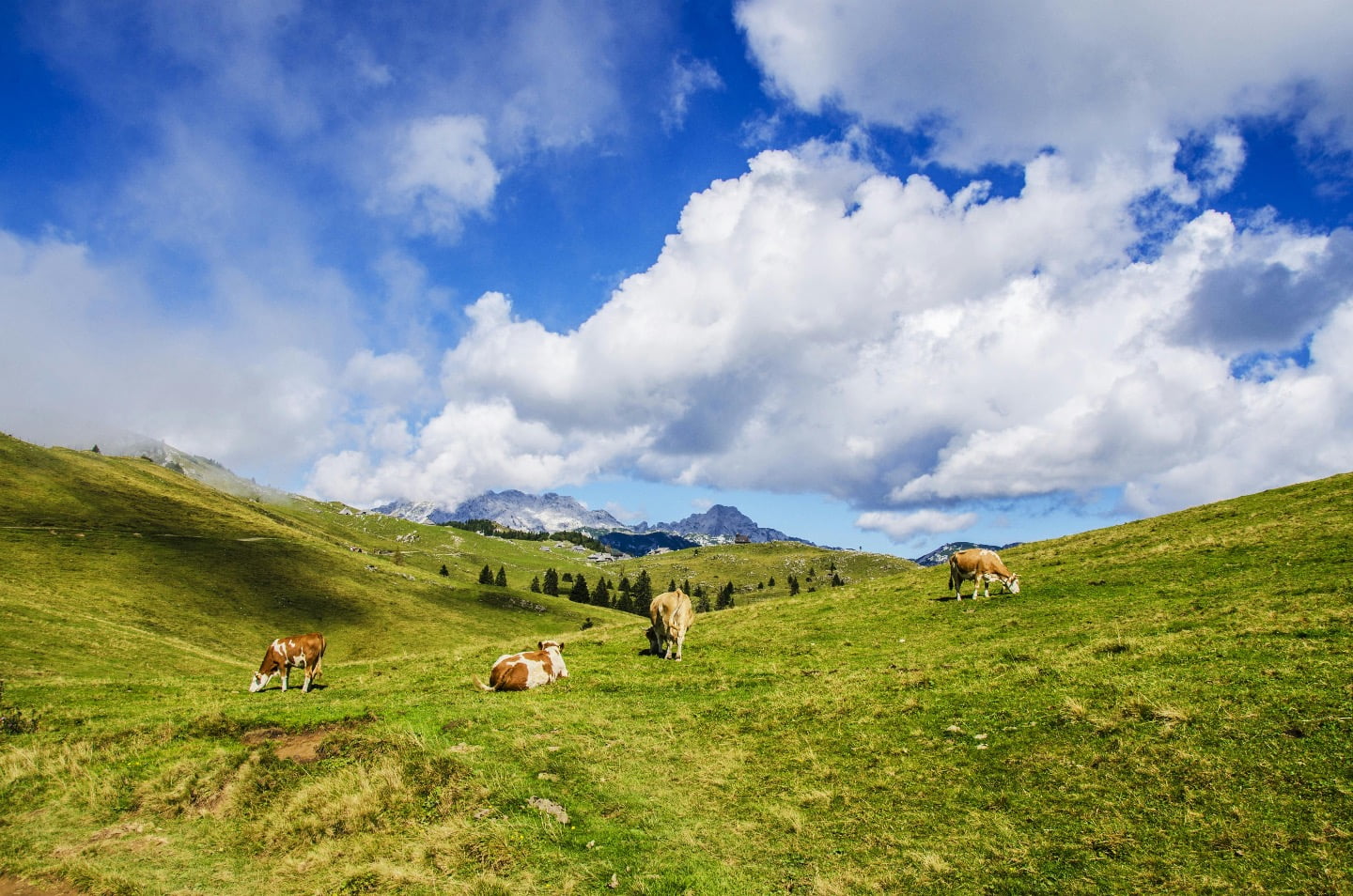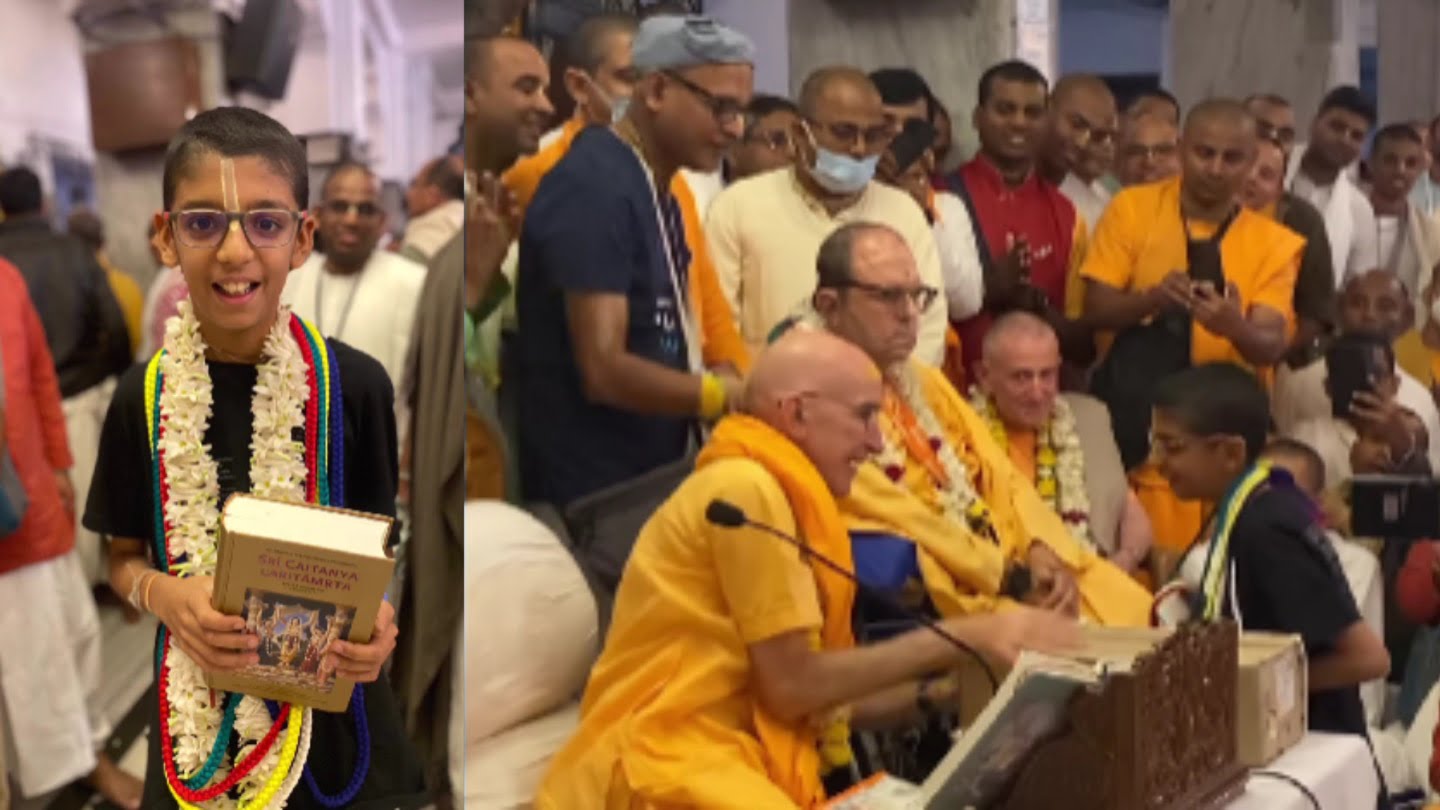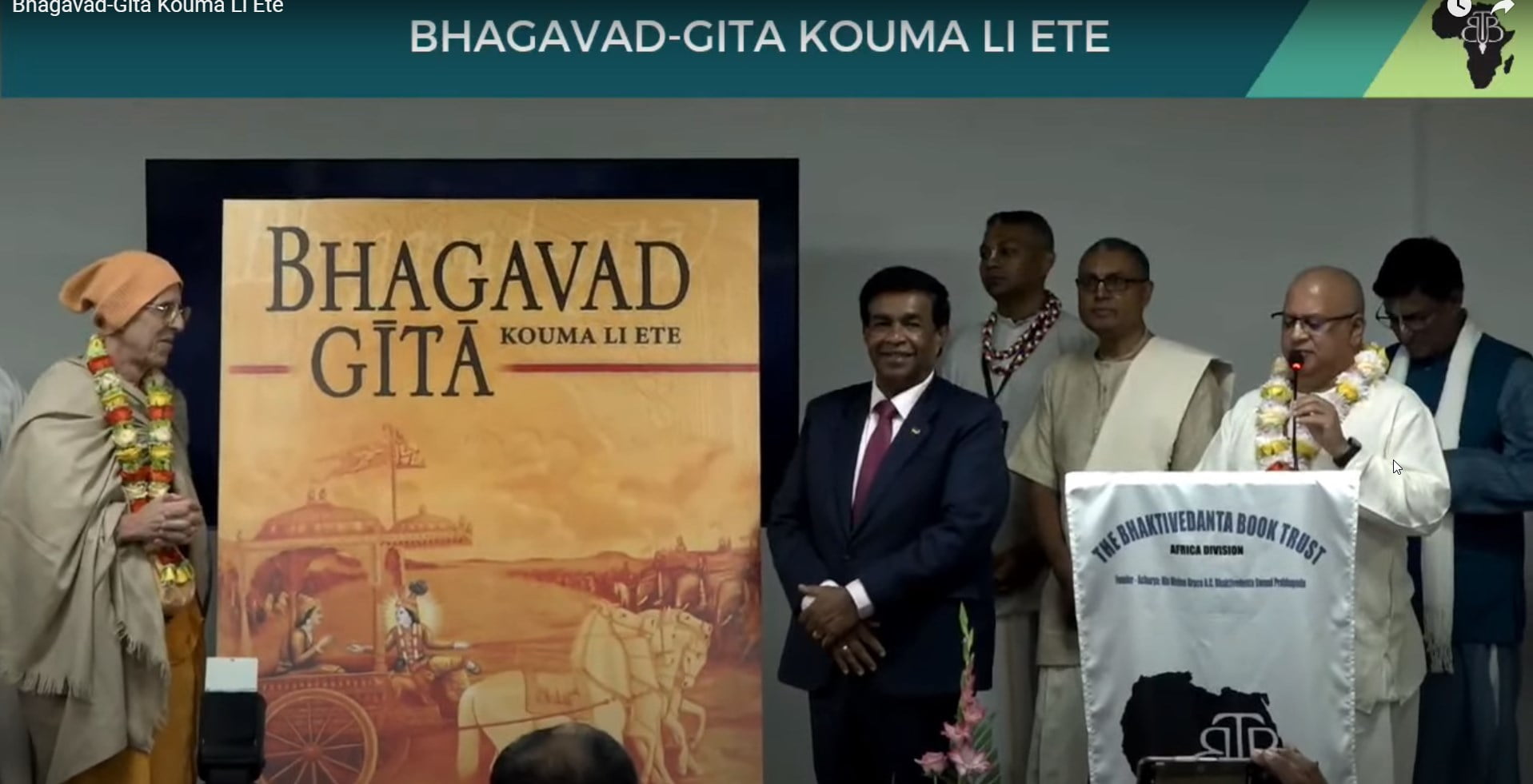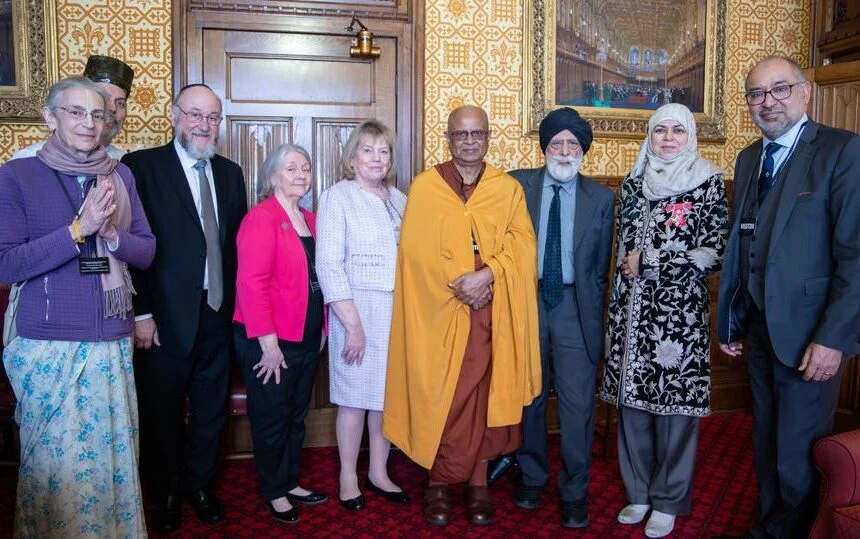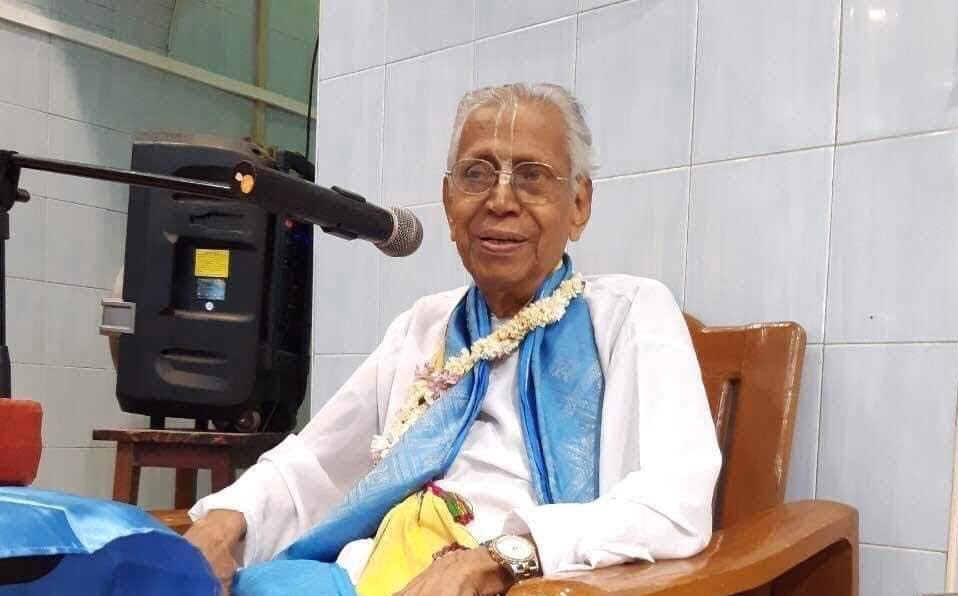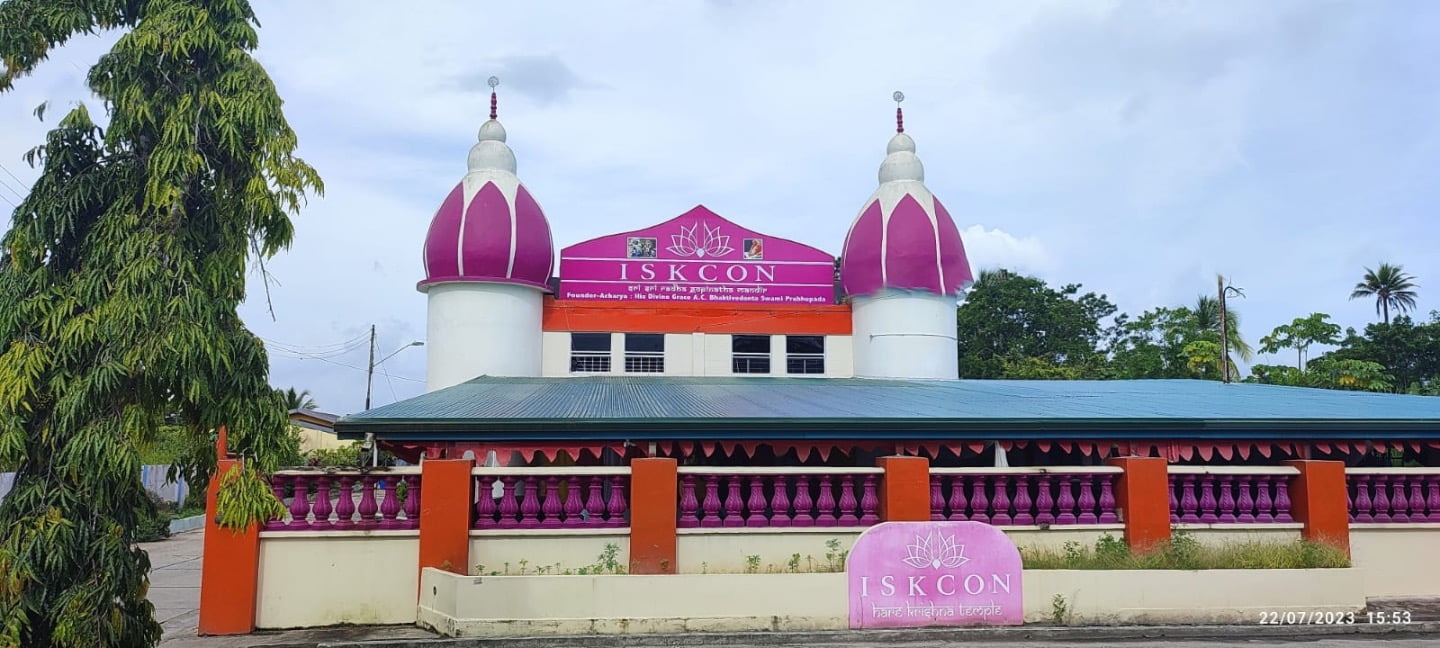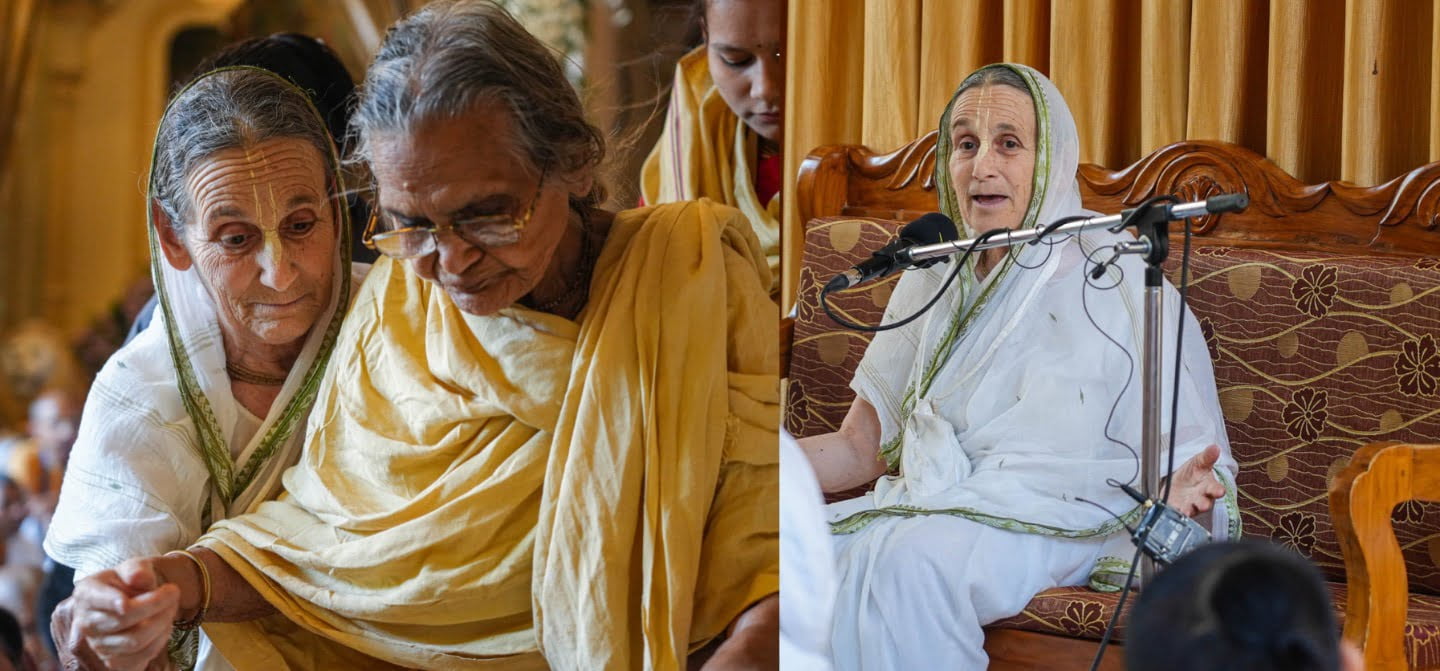Temple Profile: Kiev, Ukraine
By Madhava Smullen | Mar 20, 2014
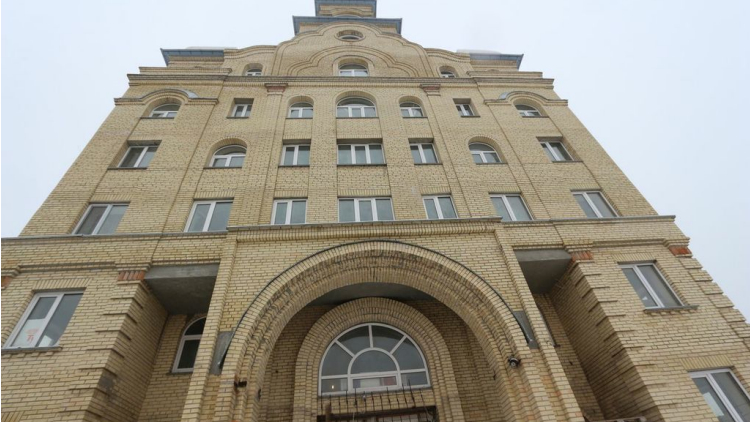
Name: New Navadvipa Mandir
Address: prov. Zoryaniy 16, Kurenyovka district, Kiev city 04078
Phone: +380 44 434 70 28
Websites: http://www.vedic-culture.in.ua, http://www.iskcon.org.ua.
Presiding Deities: Gaura Nitai
Temple Council Chairman: Agastya Muni Das.
When did it open? The temple began functioning in 1992, when construction began. Small Gaura Nitai Deities were installed in 1995, big Gaura Nitai in 1997, and the current temple room opened in 2001. Construction still continues on the temple’s interior.
Temple Style: The Kiev temple is a rather grand six-storey brick edifice that brings to mind a Ukranian church. Inside, however, the large and impressive temple room features a traditional black and white marble floor, a wrap-around balcony, large windows that let in lots of natural light, and a beautifully carved altar and Vyasasana for Sri Sri Gaura Nitai and Srila Prabhupada.
The temple also includes residential ashrams for men and women, and rooms for senior guests. Another building close by is home to the Kiev Spiritual Academy for Vaishnava Education.
Location: The temple is set in a residential area that was once on the outskirts of Kiev but became part of the city as it grew. Once down-and-out, it’s now seeing old buildings replaced by new homes and multi-story apartment blocks.

Devotees walking in the snow near the Kiev ISKCON temple
Known For: The community, and the deep and caring relationships between devotees. This has been a major focus since 2000, with the introduction of the councilor system, in which senior devotees with exemplary behavior and spiritual practice regularly mentor other devotees.
Number of residents: An average of 60 to 70 devotees.
Number of visitors: 20 to 50 people on weekdays, 400 to 600 on Sundays, and up to 1,000 for festivals.
Best time of year to visit: Summer time.
Today, Ukraine is all over the news for the civil unrest in its capital Kiev, along with government violence towards protestors and military intervention from Russia. But devotees are safe, and doing what they can to assist those affected.
Back in 1980 when Ukranian devotees Amala Bhakta Das, Kirtida Dasi, Achyuta Priya Das and Tungavidya Sakhi Dasi started ISKCON in Kiev, the country was also a troubled place, then under the communist regime. But in contrast to the situation today, back then devotees encountered extreme trials in their attempts to spread Krishna consciousness.
Throughout the 1980s, devotees were put in prison and subjected to inhuman treatment in “psychiatric wards”. One of the most prominent, Bharadvaja Das, was arrested more than 20 times and was heavily drugged in an attempt to remove his devotion to Krishna.
Still, he pushed on, making new devotees all over Ukraine, and assisting Srila Prabhupada’s first disciple the late Ananta Shanti Das in Russia too. By Krishna’s mercy, Bharadvaja survived the torture he underwent and remains a devotee of the Lord to this day.
Others reproduced Srila Prabhupada’s books as best they could. “They were not printing, but were retyping them on old typewriting machines and then distributing them at underground meetings,” says Kiev Spiritual Academy for Vaishnava Education director Damodar Charan Das. “Because they had to push the keys very hard, their fingers would become bloody from typing.”

The temple room
Meanwhile, Achyuta Priya Das and his wife Tungavidya Sakhi, as well as ISKCON guru Niranjana Swami, gave their lives to building the Ukraine community, and continue to maintain it to this day.
Through devotees’ hard work, Krishna consciousness spread from Kiev to other large cities like Kharkiv and Dnepropetrovsk. And in 1989, when the Soviet Union collapsed, and devotees could distribute properly printed BBT books, ISKCON began to grow at a rapid pace.
In 1992, devotees began construction on a large temple in a destitute area on the outskirts of the city. The only place they could afford, it was was frequented by criminals and drug addicts.
“But somehow – we feel sure it’s because we installed Gaura Nitai and began to worship them – the atmosphere gradually began to change, and now it’s a very peaceful family area,” says Damodara Charan.
Programs began at the new temple almost at the same time as construction, and Achyuta Priya and Vrishabanu installed small Gaura Nitai Deities in 1995.
In 1997, Niranjana Swami oversaw the installation of four-foot-high Neem-wood Gaura-Nitai, and on Srila Prabhupada’s Disappearance Day in 2001, the current large temple room, with its beautiful marble floor, wrap around balconies and large windows, opened.
It was in 1998, however, when a major leader left, that perhaps the most important development began in ISKCON Ukraine.
“Everyone felt that something needed to change in the movement,” Damodara Charan says. “We all began to think more about devotees than about projects. And we introduced the councilor system. Senior devotees, who are very caring and very exemplary in their behavior and sadhana, each care for a group of devotees. They meet with them regularly to discuss spiritual topics, and are available to speak with them and help them 24/7.”

Sri Sri Gaura Nitai in Kiev
As more and more devotees joined the councilor system, the effects became more and more visible.
“The relationships between devotees became much warmer and closer, and a service attitude of caring for other devotees and other people rose,” Damodara Charan says. “Today community devotees guard the temple at night, cook, and clean inside and outside. And no takes payment. It’s all volunteer work.”
In turn, counciled devotees meet and talk with newcomers at the temple during the Sunday Feast program, and build relationships with them. “Our goal is that no one who comes to the temple will be unattended,” says Damodara Charan.
Many newcomers talk about their good experience to their friends, and as a result the Ukraine temple is hugely successful, with 30 to 50 newcomers attending every Sunday Feast.
“People want to have good relationships, to see others who have good relationships, and to feel that they are needed and somebody cares about them,” Damodara Charan says, explaining the success.
The Ukraine devotees’ caring attitude also extends to the poor and needy. Their Food For Life program distributes 220 plates of sanctified vegetarian food per week to elderly people living on the Ukraine government’s meager pension, as well to children in orphanages. They also provide the underprivileged with clothing and other items when they can.
Devotees have also helped people affected by the current crisis in their country, bringing prasadam to anti-government protestors in Keiv’s central square, where around 200 people were killed and thousands injured in clashes with police between November 2013 and February 2014.

Devotees run an extensive charity program in Kiev
Damodara Charan assures us that the situation in Kiev is now already peaceful and stable, and that devotees are safe.
The crisis has, however, affected the Bhakti Sangam festival, which draws thousands of devotees and is the biggest ISKCON festival in the Ukraine and one of the biggest in the world. The festival was held every September in the Crimean Peninsula on the coast of the Black Sea, an area which became Russian territory in late February.
“So we are trying to find another place in Ukraine to hold the festival, but it will be very difficult and I don’t know if we’ll be able to hold the festival this year,” says Damodara Charan.
Devotees hope that a solution will be found, for Bhakti Sangam is more than just a festival full of blissful kirtans and lectures. It’s an expression of love; a once-in-the-year opportunity to serve more devotees than you’ll ever encounter throughout the rest of the year.
Of course, there are other spiritual retreats too, which although smaller, are nonetheless ecstatic, such as the Gauranga Festival, held in the Carpathian Mountains in the West of Ukraine. In the future, devotees hope to organize more such festivals in other parts of the country.
Meanwhile, a group of 60 brahmacharis from all over Ukraine travel throughout the country every summer in buses, holding Harinam chanting parties in two to three different cities every day, distributing thousands of books, and attracting many newcomers to Krishna consciousnesss.
Ukrainian devotees keep themselves educated too, with 300 attending the Bhakti Sastri program at the Kiev Spiritual Academy for Vaishnava Education, and newcomers receiving a solid basis in the philosophy at the “School of Bhakti” new bhakta program. There are also special courses for men and women on how to find a spouse and create strong relationships and families.
“This is very important in creating a community, because community is based on families,” Damodara Charan says. “So we are trying to expand this education all over the Ukraine.”
Next, Kiev devotees also plan to introduce their councilor system in cities all over the country.
“It is already quite successfully going on in the main cities, such as Dnepropetrovsk, Kharkiv, and Odessa,” says Damodara Charan.




